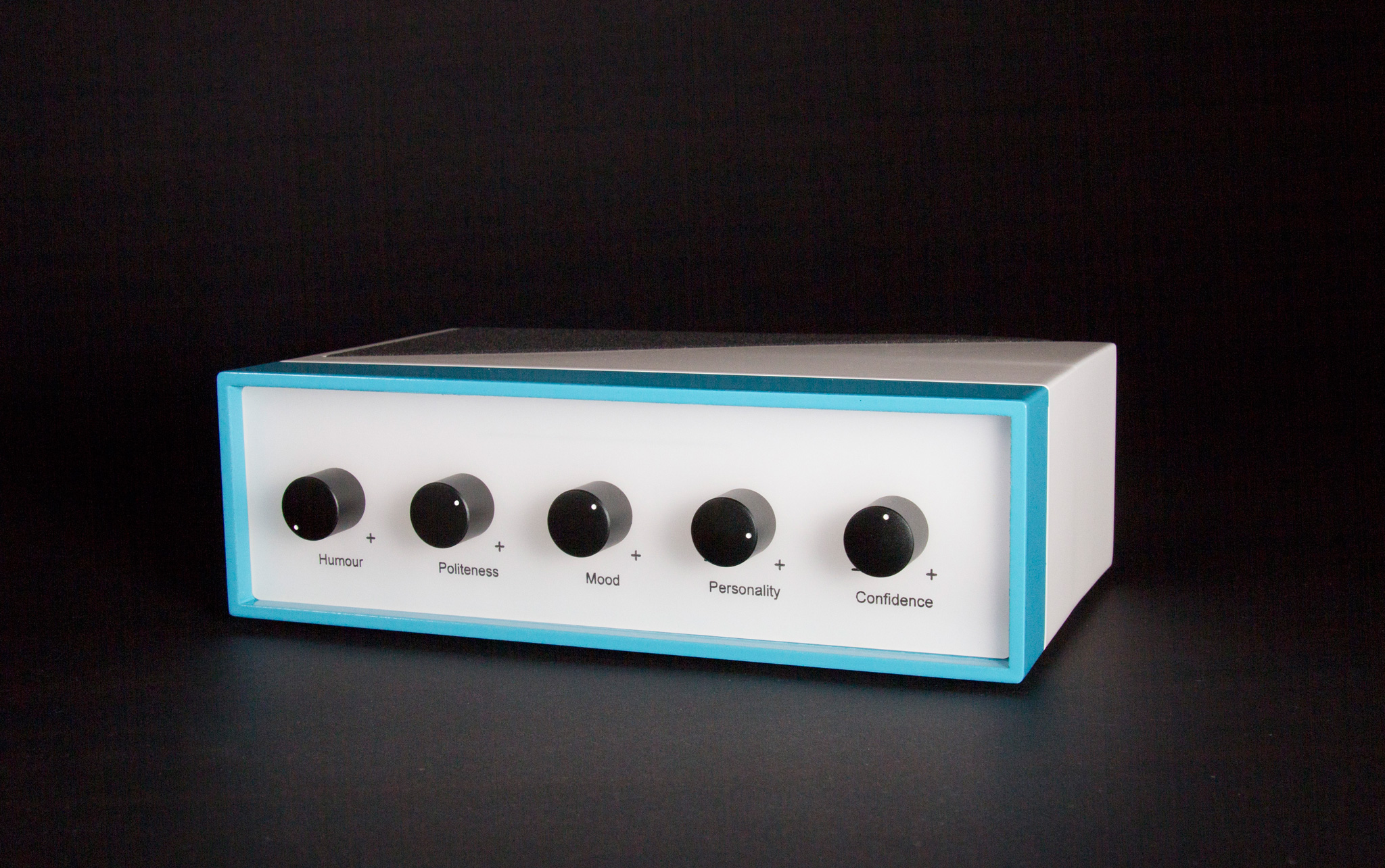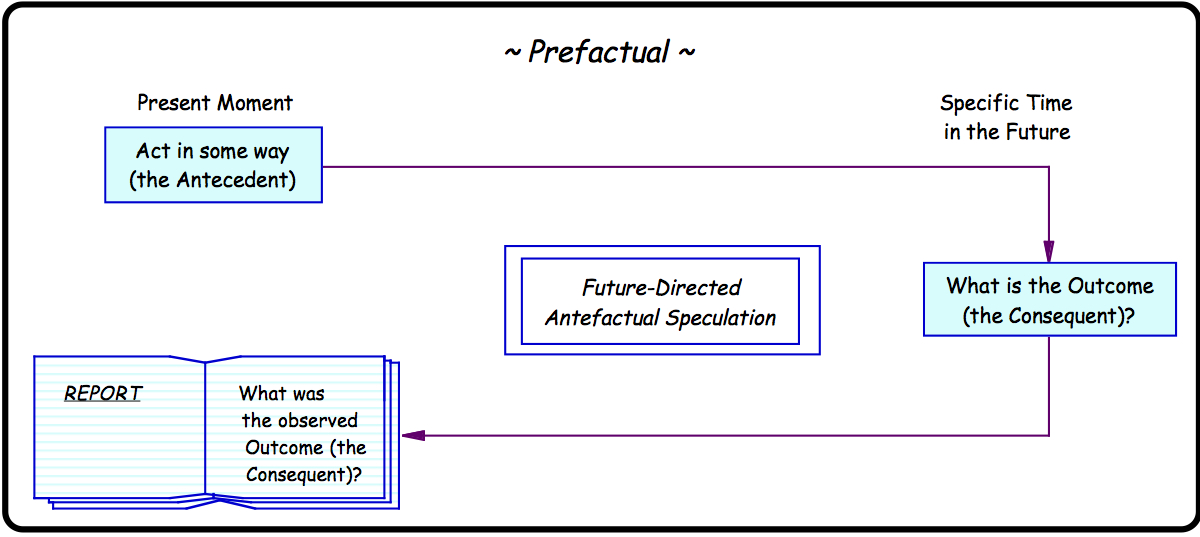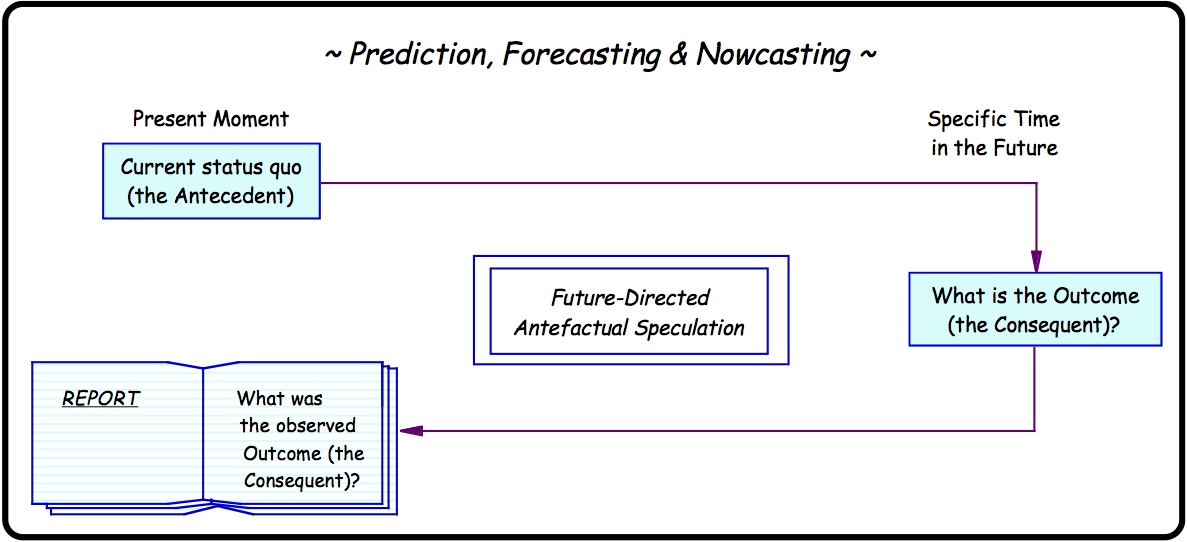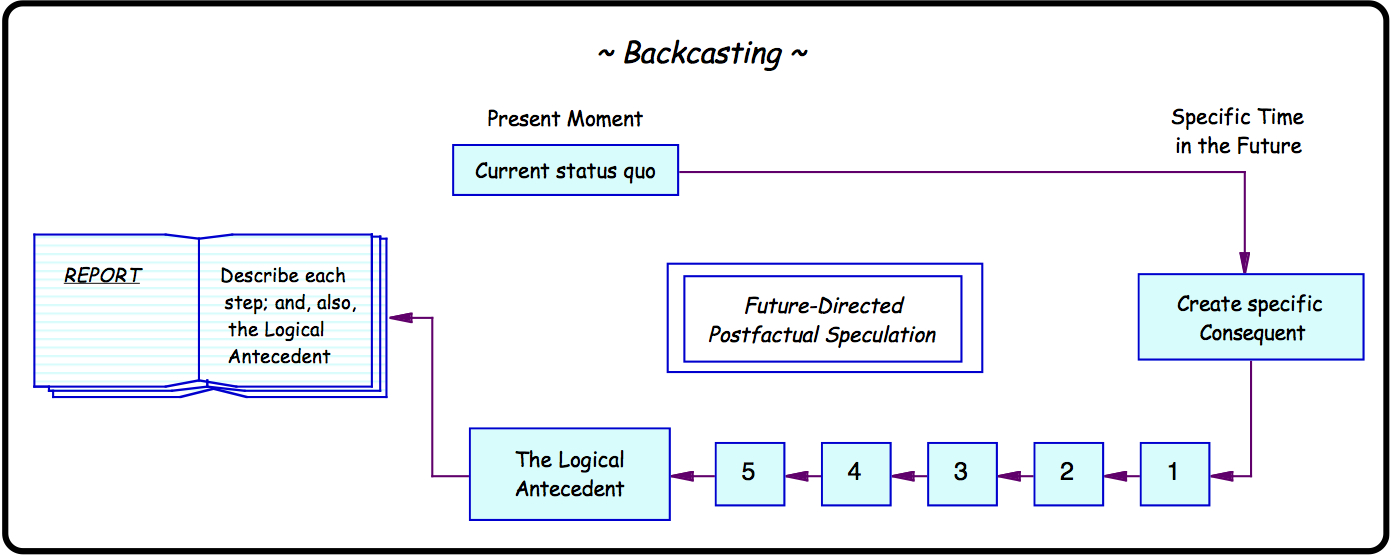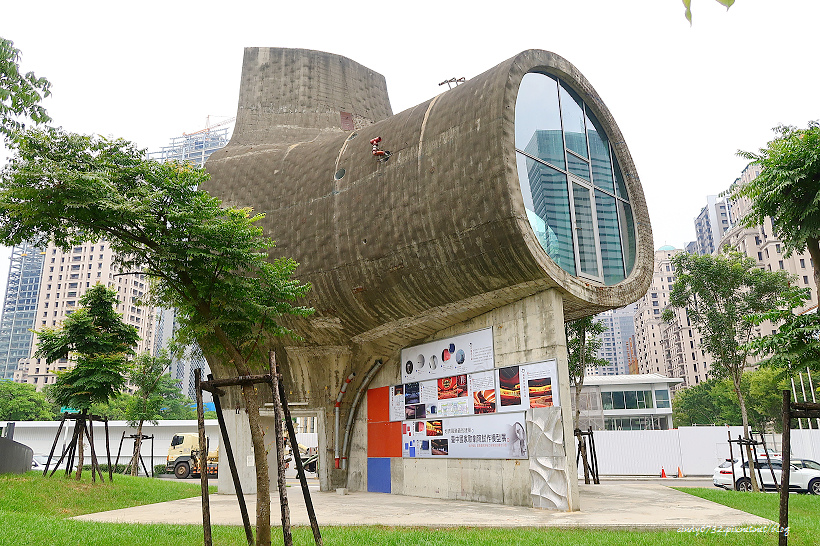2020年6月29日 星期一
2020年6月9日 星期二
week 14. Entanglement in HCI
Students present project proposals.
1. Entanglement HCI The Next Wave? (2019 TOCHI)
纏結理論: "...what Orlikowski [2010] called entanglement theories which, despite their
heterogeneity, have in common that they acknowledge the intimate inter-dependencies within
socio-material (and consequently, socio-technical) arrangements and that consequently any
attempt to study humans or technology in separation is necessarily flawed."
人與物從一開始就本體上不可分割: "To this end, these
theories all make a radical proposition: humans and things are ‘ontologically inseparable from
the start’ [Introna 2014]."
超越現代性中的社會/自然, 文化/物質二元論: "...a socio-material world that
moves beyond the socio-natural and cultural-material dualisms that have characterised modernity."
HCI 傳統: 主動的人類心智,控制被動的物質世界
海德格的親在,克服心身二元論,..."體現"(embodiment)成為第三派典的中心: "Heidegger’s
phenomenology sought to overcome this mind-body dualism by moving to a notion of ‘Dasein’
that required an embodied mind to be present in the world [Heidegger 1967]. This embodiment
became central to third wave HCI [Dourish 2001], ..."
纏結理論更進一步追問能動性的所在之處,追問工具對人所做的積極貢獻: "Entanglement theories take this line of thought one step further by questioning the locus of agency, asking which active contributions tools make to
what humans do."
事物作為社會行動者,知識並非來自客觀實在,亦非來自語言和社會領域,而是共創於物質性論述的產製: "...entanglement theories seek to reframe the problem by making things social actors, i.e., knowledge neither stems from an objective, inanimate reality, nor is entirely fabricated in the social realm or language, but describes a reality that is co-constituted in materially discursive productions."
人與機器的親密纏結,形塑了我們在世界的樣貌: "All of these different relationships, however, point to the intimate entanglement between humans and machines and that there is no human experience that is not
mediated through some kind of technology and this shapes who we are in the world."
OOO, 物的在世經驗: "Bogost [2012] and Hayles [2014] take this decentreing literally and seek to explore how objects perceive the world. OOO seeks to emphasise the difference between the human-centric notion of knowing about an object and the object-centric notion of being an object. Through what Hayles [2014] calls Object-Oriented Inquiry, we are invited to speculate about the phenomenological experiences of objects being in the world."
Interview with Things, Botanic Printers
作者只在OOO所展示的方法論上有共鳴,但本體論上非常懷疑: "So, while I will draw methodologically on the modes of speculation that OOO puts forward, I am more sceptical about its ontological position."
人與機器的親密纏結,形塑了我們在世界的樣貌: "All of these different relationships, however, point to the intimate entanglement between humans and machines and that there is no human experience that is not
mediated through some kind of technology and this shapes who we are in the world."
OOO, 物的在世經驗: "Bogost [2012] and Hayles [2014] take this decentreing literally and seek to explore how objects perceive the world. OOO seeks to emphasise the difference between the human-centric notion of knowing about an object and the object-centric notion of being an object. Through what Hayles [2014] calls Object-Oriented Inquiry, we are invited to speculate about the phenomenological experiences of objects being in the world."
Interview with Things, Botanic Printers
作者只在OOO所展示的方法論上有共鳴,但本體論上非常懷疑: "So, while I will draw methodologically on the modes of speculation that OOO puts forward, I am more sceptical about its ontological position."
能動實在論,基於波爾的哲學,一種操演性的後人類本體論: "In ‘Meeting the Universe Halfway’ Barad [2007], a theoretical physicist and feminist theorist, develops Agential Realism as a performative and posthumanist ontology on the back of Niels Bohr’s philosophy-physics"
操演性:被產製為論述現象之前,事物並不存在: "and turns to performativity, i.e., the idea that nothing exists before it is produced as a discursive phenomenon."
OOO事物有獨立的存在,能動實在論(AR)只在論述實踐中事物才存在: "As such, Barad argues the exact opposite to OOO, where things exist independent of their relations, while in Agential Realism things are only coming into existence through discursive practices."
ENTANGLEMENT HCI: 人與工具互相定義,共同進化: "Humans and their tools mutually define themselves and co-evolve over time."
我們不是設計電腦或互動,而是制定現象的配置: "First, we are not designing computers,
nor can we design interactions. What we seem to be doing is creating configurations that
enact certain phenomena."
配置:人與非人行動者內在互動的混合網絡: "Configurations are hybrid networks
in which human and non-human actors intra-act."
人 social construct並沒有那麼偉大
"Naive realism falls short in very much the same ways: the material world is rendered the only reality that matters—and it is entirely passive and detached from the human activities that are used to inquire into the qualities of the real world. Within a relational and performative ontology, the dichotomy between social construction and independent reality is resolved: non-human and human actors enact (construct) reality, i.e., nothing is social (or everything) and nothing is independent."
衍射,diffraction: "Barad [2007] argues for diffraction as a knowledge production method that is much more attuned to performativity, as it attends to the differences, relationalities and the uncertainties in the differential becoming of things."
倫理-本體-認識一體:"So, every intra-action in assemblages of human and non-human actors not only draws ontological boundaries and determines ways of knowing, it also is an ethical encounter."
透過連續的邊界創造與親密的纏結,發現人與事物間的移動的本體本質: "The continuous boundary making and intimate entanglement in intra-action further shifts our attention from impact to the shifting ontological nature of humans and things."
"I want to argue to abandon user-centred design. Not because humans do not matter, quite to the contrary: to shape who we want to be in this world, we should be designing meaningful relations, not user experiences. Meaningful Design encompasses the political mattering of things through which we make sense of us in the world, going beyond what we experience, but who we want to be. This kind
of Dasein (being-in-the-world) could be interpreted as an ethical take on Heidegger’s philosophy..."
"I argue we need to evolve our PD practices and think of how we can create spaces and processes
that enable humans and non-humans to come together in the creative, political, controversial Participatory Speculation and mattering of future socio-technical configurations."
處境共同推測: situated experiential co-speculation
"I am suggesting to move from optimising user experience to designing meaningful relations that are enacted as part of our ongoing re-configuring the world."
2.
IoT Data in the Home: Observing Entanglements and Drawing New Encounters (2020 CHI)
"...entanglements between home dwellers
and their home data."
3.
Real-Fictional Entanglements: Using Science Fiction and Design Fiction to Interrogate Sensing Technologies
Real-Fictional Entanglements
"Rather than viewing science fiction as an external force that influences technological
research and development, through design we highlight
how the real and fictional are integrally connected and
entangled. "
"By engaging in real-fictional
entanglements, design fiction can be used generate design
ideas that explore and reflect on futures which might
otherwise go unnoticed. "
Final project requirement:
Neuromancer X Everyday Entanglement
Demo & Exhibition
1. posters (any size)
2. Design fiction props (artifacts, newspapers, DMs, ..., any other kinds of format)
3. 10 mins presentation (using PPT or report in ACM format)
Report, photos (or trailers) :
2. ACM SIGCHI Extend Abstract (EA) format 6~10 pages
3. includes: Introduction, Background, Design research gaps, The Design, the deployment in contexts (real or fictional, simulated), Probing and Data collecting, Findings and Implications, Discussion, and Conclusion
4. photos include: mood boards, concept sketches, final props and visuals, speculative scenarios in Everyday contexts (home, street, office, city, ...)
Due date: 6/24, 2020
upload to google drive
2020年5月25日 星期一
week 13. introduction to entanglement HCI
1. students present (Neumancer texts + photos) entanglements
2.
Examples:
https://www.adsoftheworld.com/media/print/maximidia_vintage_twitter?fbclid=IwAR2PVhqHuLZPjkVhnWNwR-LodyK0GGffRqP-4XKvQi39K4aTwwP5-iz70qY
https://shenglam.artstation.com/projects/zADNeZ?fbclid=IwAR1qklifvUkirtWfGeXfuZsBceZJQ4SSWMPH1DN5_TYFTxmXf-U7XssbQEQ
https://www.invaluable.com/blog/vintage-ads/?fbclid=IwAR2ba3PEB2VtKLmU6N5LOhVfcIWLwM5qhdlMk9DoEOpCFKIX5xtnbc1lMiU
https://www.behance.net/gallery/52646779/Social-Decay?fbclid=IwAR3BaxurEUbbsSOtpujpkLv4Ng1DmU9JW59oV71kWZJbsgzMUS6kw2Iiq10
https://www.yankodesign.com/2018/11/01/todays-technology-in-yesterdays-avatars/?fbclid=IwAR31u427M4uBdr0St5SHeK-OWGbEBifSA-IYjTrAwS1j0cJSKcPtDZwQK_E
Neuromancer-Entanglement Project proposal:
1. find brands, products, devices, et al. in Neuromancer
2. find everyday objects (or create new models) and make speculative entanglement with items in 1.
3. Cite texts, micro-scenarios, in Neuromancer
4. Plan time-space narratives for exhibition
Due date: June 10th, 2020
2.
Entanglement HCI The Next Wave? (2019 TOCHI)
3.
4.
7.
8.
by Superflux
9.
by PSK Studio
Examples:
https://www.adsoftheworld.com/media/print/maximidia_vintage_twitter?fbclid=IwAR2PVhqHuLZPjkVhnWNwR-LodyK0GGffRqP-4XKvQi39K4aTwwP5-iz70qY
https://shenglam.artstation.com/projects/zADNeZ?fbclid=IwAR1qklifvUkirtWfGeXfuZsBceZJQ4SSWMPH1DN5_TYFTxmXf-U7XssbQEQ
https://www.invaluable.com/blog/vintage-ads/?fbclid=IwAR2ba3PEB2VtKLmU6N5LOhVfcIWLwM5qhdlMk9DoEOpCFKIX5xtnbc1lMiU
https://www.behance.net/gallery/52646779/Social-Decay?fbclid=IwAR3BaxurEUbbsSOtpujpkLv4Ng1DmU9JW59oV71kWZJbsgzMUS6kw2Iiq10
https://www.yankodesign.com/2018/11/01/todays-technology-in-yesterdays-avatars/?fbclid=IwAR31u427M4uBdr0St5SHeK-OWGbEBifSA-IYjTrAwS1j0cJSKcPtDZwQK_E
Neuromancer-Entanglement Project proposal:
1. find brands, products, devices, et al. in Neuromancer
2. find everyday objects (or create new models) and make speculative entanglement with items in 1.
3. Cite texts, micro-scenarios, in Neuromancer
4. Plan time-space narratives for exhibition
Due date: June 10th, 2020
2020年5月18日 星期一
week 12. Neuromancer Photo+Text workshop
workshop : neuromancer texts cards + personal photos
Project 2. Entanglement of Sci-fi & everyday
1. work out at least 3 photos with meaningful Neuromancer texts
2. For each photo+text, complete a short story telling (for example, narratives from the future, the poetics of design fiction)
3. upload 3 short fictions to Google drive (deadline: 5/27, 2020)
Project 2. Entanglement of Sci-fi & everyday
1. work out at least 3 photos with meaningful Neuromancer texts
2. For each photo+text, complete a short story telling (for example, narratives from the future, the poetics of design fiction)
3. upload 3 short fictions to Google drive (deadline: 5/27, 2020)
2020年5月11日 星期一
week 11. experiential speculation & narrative from future
Experience sharing: Daily photos with Neuromancer texts
Experiential speculation v.s. Conceptual speculation
PSK Studio Quantum Parallelograph
Stuart
Candy and Jake Dunagan. 2017. Designing an experiential scenario: The People
Who Vanished. Futures 86: 136–153.
v.s.
UMK by Dunne
來自後攻殼動隊時代的一封信
1. 未來與現在的人物關係描述
2. 錨點事件 (anchor event) 引入情境
3. what-if 規則造成的後果與危機
4. 解除危機的邀請與行動開展的召喚
Paper reading:
The poetics of design fictions
(the narrative diagram)
http://speculative.hr/en/category/works-en/
The poetics of design fictions
(the narrative diagram)
PPPP by Dunne & Raby
http://speculative.hr/en/category/works-en/
Questions:
1. What is the possible narrative scheme? Illustrate it with diagram (分組討論)
2. What are the anchors? objects, human, place, legend, or ritual?
Practice: a letter from future
Compose a letter from future where the anchor event has just happened.
This letter should sensitize the relationship between future and the present, inspire how to conduct a design research, and fictionize your roles and worlds.
2020年5月5日 星期二
week 10. material speculation
1. Students practice transforming everyday objects into speculative artifacts in Neuromancer
(1) identify the possible object in the Neuromancer fiction
(2) apply one quality of speculative aesthetics to the object (remove details, reduce colors, simplify shapes, blur functions, ...) to get close to the fictional artifacts.
(3) sketch the fictional artifact
(4) name it and cite the texts in the book
William Gibson's Neuromancer: Concept Art
2. Paper reading: Material Speculation (AA'15)
3. Rung-Huei Liang. 2013. Pragmatist Poetics in Interaction Design. (IASDR 2013)
"Bachelard sets material imagination apart from formal imagination [2]. Rather than being conceived intellectually in formal imagination, material imagination is an idea that comes from contact with nature material, such as water and fire." p. 2524
This weekend:
upload at least 5 everyday photos (in FB, IG, Flickr,...) to the google drive for workshop preparation.
Deadline: 2020, 5, 10. 23:59
(1) identify the possible object in the Neuromancer fiction
(2) apply one quality of speculative aesthetics to the object (remove details, reduce colors, simplify shapes, blur functions, ...) to get close to the fictional artifacts.
(3) sketch the fictional artifact
(4) name it and cite the texts in the book
William Gibson's Neuromancer: Concept Art
2. Paper reading: Material Speculation (AA'15)
3. Rung-Huei Liang. 2013. Pragmatist Poetics in Interaction Design. (IASDR 2013)
"Bachelard sets material imagination apart from formal imagination [2]. Rather than being conceived intellectually in formal imagination, material imagination is an idea that comes from contact with nature material, such as water and fire." p. 2524
Questions:
1. What are counterfactual artifacts?
(containing an 'if'- clause that is contrary to fact)
nonfunctional prototypes, storytelling props, fictional objects
2. What is Possible World Theory?
3. What is pragmatist speculation?
4. What is formal speculation v.s. material speculation?
3. What is pragmatist speculation?
4. What is formal speculation v.s. material speculation?
This weekend:
upload at least 5 everyday photos (in FB, IG, Flickr,...) to the google drive for workshop preparation.
Deadline: 2020, 5, 10. 23:59
2020年4月27日 星期一
week 9. thought experiments
1. Students share photos of speculative aesthetics
Practice:
choose a speculative photo
1. identify the multiple possible worlds (1) by the photographer (2) by the objects, (3) by the possible users, characters
2. give annotations to describe the qualities of speculative aesthetics
2. Thought experiments (Speculative Everything 一書的文字)
"One way this might be possible is to treat design speculations not as
narratives or coherent “worlds” but as thought experiments—constructions,
crafted from ideas expressed through design—that help us think about
difficult issues." p. 80. SE
"一個可行之道是不要把設計推測當成敘事或條理分明的「世界」看待,而要視為能幫助我們思考困難議題的思想實驗――用經由設計表達的構思,精心建造的物品。 " P. 105
"Thought experiments are usually done in fields
where it is possible to precisely define limits and rules, such as mathematics,
science (particularly physics), and philosophy (especially ethics) to test
ideas, refute theories, challenge limits, or explore possible implications.
They make full use of the imagination and are often beautiful designs in
themselves."
"思想實驗通常是在有可能劃定界線和規則的領域進行,例如數學、科學(特別是物理學)和哲學(尤其是倫理學),來測試構思、駁斥理論、質疑限制或探究可能的後果。¹ 它們充分運用想像力,本身也常是美麗的設計。"
"One of our favorite forms of thought experiment uses reductio ad absurdum,
a type of logical argument in which one assumes a claim for the sake of
argument and derives an absurd or ridiculous outcome by taking it to its
extreme, concluding that the original claim must have been wrong because it
led to such an absurd result."
"我們最鍾意的一種思想實驗是採用歸謬法(reductio ad absurdum),在這種邏輯論證中,我們為便於討論,假設了某個主張,並將之推演到極致而導出荒謬的結果,進而斷定,既然原來的主張會產生如此荒謬的結果,它必是謬誤。" P. 107
"Another well-established form of thought experiment is the counterfactual. A
historical fact is changed to see what might have happened, if. . . . It is
sometimes used in history to understand the importance of key events and
their influence on how the world turned out."
"另一個已廣為接受的思想實驗形式是反事實(counterfactual):改變歷史事實來看看,假如……可能會發生什麼事。歷史學有時會運用這種實驗來了解關鍵事件的重要性,以及它們對世界如何演變的影響。" P. 107
"...we are
more interested in using props to transport viewers’ imagination into a
thought experiment, or what-if, and allow enough room for them to make
their own interpretations." p. 93, SE
"我們更有興趣利用道具來將觀者的想像力移轉到思想實驗,或「要是……會怎麼樣」,讓他們有足夠的空間做自己的詮釋。" P. 121
Generally speaking, there are seven types of thought experiments in which one reasons from causes to effects, or effects to causes. (wikipedia)
(1)
(4)
The activity of prediction attempts to project the circumstances of the present into the future.
(5)
Next week:
Bring one artifact to classroom, related to Neuromancer Chap1 & 2, to do material speculation.
Practice:
choose a speculative photo
1. identify the multiple possible worlds (1) by the photographer (2) by the objects, (3) by the possible users, characters
2. give annotations to describe the qualities of speculative aesthetics
2. Thought experiments (Speculative Everything 一書的文字)
"One way this might be possible is to treat design speculations not as
narratives or coherent “worlds” but as thought experiments—constructions,
crafted from ideas expressed through design—that help us think about
difficult issues." p. 80. SE
"一個可行之道是不要把設計推測當成敘事或條理分明的「世界」看待,而要視為能幫助我們思考困難議題的思想實驗――用經由設計表達的構思,精心建造的物品。 " P. 105
"Thought experiments are usually done in fields
where it is possible to precisely define limits and rules, such as mathematics,
science (particularly physics), and philosophy (especially ethics) to test
ideas, refute theories, challenge limits, or explore possible implications.
They make full use of the imagination and are often beautiful designs in
themselves."
"思想實驗通常是在有可能劃定界線和規則的領域進行,例如數學、科學(特別是物理學)和哲學(尤其是倫理學),來測試構思、駁斥理論、質疑限制或探究可能的後果。¹ 它們充分運用想像力,本身也常是美麗的設計。"
"One of our favorite forms of thought experiment uses reductio ad absurdum,
a type of logical argument in which one assumes a claim for the sake of
argument and derives an absurd or ridiculous outcome by taking it to its
extreme, concluding that the original claim must have been wrong because it
led to such an absurd result."
"我們最鍾意的一種思想實驗是採用歸謬法(reductio ad absurdum),在這種邏輯論證中,我們為便於討論,假設了某個主張,並將之推演到極致而導出荒謬的結果,進而斷定,既然原來的主張會產生如此荒謬的結果,它必是謬誤。" P. 107
"Another well-established form of thought experiment is the counterfactual. A
historical fact is changed to see what might have happened, if. . . . It is
sometimes used in history to understand the importance of key events and
their influence on how the world turned out."
"另一個已廣為接受的思想實驗形式是反事實(counterfactual):改變歷史事實來看看,假如……可能會發生什麼事。歷史學有時會運用這種實驗來了解關鍵事件的重要性,以及它們對世界如何演變的影響。" P. 107
"...we are
more interested in using props to transport viewers’ imagination into a
thought experiment, or what-if, and allow enough room for them to make
their own interpretations." p. 93, SE
"我們更有興趣利用道具來將觀者的想像力移轉到思想實驗,或「要是……會怎麼樣」,讓他們有足夠的空間做自己的詮釋。" P. 121
Generally speaking, there are seven types of thought experiments in which one reasons from causes to effects, or effects to causes. (wikipedia)
(1)
Prefactual (事前) (未來導向,事前推測)
Prefactual (before the fact) thought experiments — — speculate on possible future outcomes, given the present, and ask "What will be the outcome if event E occurs?"
(2)Counterfactual (反事實) (過去導向,事前推測)
Counterfactual (contrary to established fact) thought experiments — — speculate on the possible outcomes of a different past; and ask "What might have happened if A had happened instead of B?"
Semifactual (半事實) (過去導向,事前推測)
Semifactual thought experiments — — speculate on the extent to which things might have remained the same, despite there being a different past; and asks the question Even though X happened instead of E, would Y have still occurred?
(4)
Prediction (預測) (未來導向,事前推測)
(5)
Hindcasting (後報) (過去導向,事前推測)
The activity of hindcasting involves running a forecast model after an event has happened in order to test whether the model's simulation is valid.
(6)
Retrodiction (追溯) (過去導向,事後推測)
The activity of retrodiction (or postdiction) involves moving backwards in time, step-by-step, in as many stages as are considered necessary, from the present into the speculated past to establish the ultimate cause of a specific event (e.g., reverse engineeringand forensics).
(7)
Backcasting (未來回溯) (未來導向,事後推測)
he activity of backcasting —involves establishing the description of a very definite and very specific future situation. It then involves an imaginary moving backwards in time, step-by-step, in as many stages as are considered necessary, from the future to the present to reveal the mechanism through which that particular specified future could be attained from the present.
See Blade runner 2049 ->2048 nowhere to run -> 2036 Nexus Dawn -> Blackout 2022
Bladerunner (1982) 2019
Bladerunner (1982) 2019
Next week:
Bring one artifact to classroom, related to Neuromancer Chap1 & 2, to do material speculation.
2020年4月21日 星期二
week 8. design fiction (revisiting Neuromancer)
1. students present images of Neuromancer chap1,2
2. What is Design Fiction?
What is Prop?
What is Diegetic Prototype?
Bruce Sterling
ACM Interaction 2009 cover story, Design Fiction by Bruce Sterling
Examples:
Postscape Design Fiction
Core77 Speculative Design
Discussion:
1. What are the differences between Design Fiction and Speculative Design?
(clear fiction v.s. techno-poetic speculation)
2. Aesthetics of speculation: What if an an everyday object is a diegetic prototype of another possible world?
How about science fiction?
also see TEI 2017 student design challenge references:
https://tei.acm.org/2017/sdc.php
2. What is Design Fiction?
What is Prop?
What is Diegetic Prototype?
source: Design Fiction: A Short Essay on Design, Science, Fact and Fiction
Bruce Sterling
ACM Interaction 2009 cover story, Design Fiction by Bruce Sterling
Examples:
Postscape Design Fiction
Core77 Speculative Design
The Solution Printer: Magic Realist Design Fiction
Real-Fictional Entanglements: Using Science Fiction and Design Fiction to Interrogate Sensing Technologies (Biosense Berkeley)
Discussion:
1. What are the differences between Design Fiction and Speculative Design?
(clear fiction v.s. techno-poetic speculation)
2. Aesthetics of speculation: What if an an everyday object is a diegetic prototype of another possible world?
How about science fiction?
also see TEI 2017 student design challenge references:
Watching/Reading List
We encourage wild, obscure references to any kind of sci-fi media. Here’s some our favourite to get you started
- • Vermilion sands [JG Ballard] - Houses with memory, living fashion and sound jewellry.
- • Rainbows End [Vernor Vinge] - Augmented Reality, haptic feedback and silent messages.
- • Snow Crash [Neil Stephenson] - Virtual reality, physical augmentations.
- • Her [Spike Jonze] - computers as people, ubiquitous computing, super AI.
- • Matrix [The Wachowski Brothers] - simulated reality, downloading programs into the brain
- • Blade Runner [Ridley Scott] - Dystopian futures, Androids and AI, replication of beings.
- • Brainstorm [Douglas Trumbull] - physically experiencing somebody else's reality
- • Ghost in the Shell [Mamoru Oshii] - storing memories, accessing brains, replication
- • Diamond Age [Neil Stephenson] - parenting from afar via evolving storytelling
- • Dune [Frank Herbert] - cognitive augmentation
https://tei.acm.org/2017/sdc.php
九龍城寨
EX:
觀察生活周遭, 拍照片表達對照的概念
例如:
未來 vs. 過去, 推測的世界 (what we have the potential to become) vs. 現狀 (what we are)
都市場景, 交通工具, 廢墟/大樓, 生活用品, 信仰, 政治, 國際經濟, 權力, 社會制度, 家庭制 度, 教育, 身體, 運動, 休閒, 品牌, 符號, 文字, 自然環境, 物種....
Reference:
Neuromancer
Part I : Chiba City Blues
"The sky above the port was the color of television, tuned to a dead channel."
神經喚術士
第一部: 千葉市藍調
"港口上空是電視的顏色,電視調至死頻的顏色。"
https://www.youtube.com/watch?v=b1kJI-UvYwQ
https://www.youtube.com/watch?v=NNVbrHjX-xs
Reference:
Design fictions an introduction and provisional taxonomy
by Derek HalesNeuromancer
Part I : Chiba City Blues
"The sky above the port was the color of television, tuned to a dead channel."
神經喚術士
第一部: 千葉市藍調
"港口上空是電視的顏色,電視調至死頻的顏色。"
https://www.youtube.com/watch?v=b1kJI-UvYwQ
https://www.youtube.com/watch?v=NNVbrHjX-xs
2020年4月14日 星期二
week 7. aesthetics of speculation
1. design fiction slides by Bleecker:
2. Practice "Poetics of design fictions" design process
https://en.wikipedia.org/wiki/Aesthetics
Questions:
What is "speculation"? What is speculative design? What is aesthetics of speculation?
naive realism 素樸實在論. modal realism (MR) 模態實在論, possiblist realism 可能主義實在論, speculative realism (SR) 推測實在論
pragmatist aesthetics 實用主義美學 (Dewey), speculative aesthetics 推測美學
學生報告分享 (4/22):
用一張照片(拍攝或下載均可)或繪圖,詮釋"神經喚術士"第一、二章的一個情境,(可以搭配書中句子)
Lynne Cohen’s Occupied Territory (1987)
Taryn Simon’s An American Index of the Modern and Unfamiliar9 (2007)
Richard Ross’s Architecture of Authority10 (2007)
(The above three examples reveal spaces that we know must exist but have no idea how they look. They have a harsh, inhuman quality, stripped down to the absolute essentials, emphasizing their purpose.
Lucinda Devlin’s The Omega Suites (1991–1998) provides glimpses into extreme
but ghoulish spaces—execution chambers, the places where the state, on its
citizens’ behalf, takes people’s lives. They are clinical, easy-to-maintain,
brutally engineered environments designed to achieve one purpose—the
humane killing of human beings. They include safety measures, provision for
last-minute retrieval, and the need for the event to be witnessed.
http://larrysultan.com/gallery/evidence/ : gathered images from the archives of research centers,
laboratories, test sites, and industrial facilities, presented without captions
or other information. They compel us to interpret what is going on, to project
stories and meanings onto them, illustrating that even objective records are
rarely neutral.
For us, these are the proto-images for an aesthetics of speculation. They
suggest a techno-poetic landscape situated somewhere between what we are
and what we have the potential to become.
Questions:
What are the possible qualities of speculative aesthetics? for example:
out-of-place,
out-of-time,
multiple possible worlds,
hidden truth,
object's viewpoint,
other unknown actor's viewpoint,
other species viewpoints
withdrawal,
resistance,
object's enjoyment (allure, emotion),
non-human (machine, AI)'s perspective,
strange object-to-object relationship,
...
Constructively identify at least 20 qualities by concluding classmates' sharing.
Example :
國家歌劇院的試作模型
Reading:
Speculative aesthetics
Speculative Aesthetics and Object-Oriented Inquiry (OOI),” by N. Katherine Hayles
Graham Harman: “Aesthetics as First Philosophy"
p. 159:
p. 167:
2. Practice "Poetics of design fictions" design process
https://en.wikipedia.org/wiki/Aesthetics
Questions:
What is "speculation"? What is speculative design? What is aesthetics of speculation?
naive realism 素樸實在論. modal realism (MR) 模態實在論, possiblist realism 可能主義實在論, speculative realism (SR) 推測實在論
pragmatist aesthetics 實用主義美學 (Dewey), speculative aesthetics 推測美學
學生報告分享 (4/22):
用一張照片(拍攝或下載均可)或繪圖,詮釋"神經喚術士"第一、二章的一個情境,(可以搭配書中句子)
學生報告 (4/29):
speculative aesthetics around the life world:
請觀察生活周遭, 拍照片表達奇異的推測美感(aesthetics of speculation)、技術詩意(techno-poetic)、類平行世界、almost impossible reality。
參考: Lynne Cohen, Lucinda Devlin, Mike Mandel and Larry Sultan
Lars Tunbjörk’s Alien at the Office (2004) (mundane spaces that seem extraordinary. Yet these alien spaces are where many people spend their working lives)
http://www.lucindadevlin.com/
Lucinda Devlin's photos:
Lynne Cohen's artworks:
http://www.lynne-cohen.com/Lynne Cohen’s Occupied Territory (1987)
Taryn Simon’s An American Index of the Modern and Unfamiliar9 (2007)
Richard Ross’s Architecture of Authority10 (2007)
(The above three examples reveal spaces that we know must exist but have no idea how they look. They have a harsh, inhuman quality, stripped down to the absolute essentials, emphasizing their purpose.
but ghoulish spaces—execution chambers, the places where the state, on its
citizens’ behalf, takes people’s lives. They are clinical, easy-to-maintain,
brutally engineered environments designed to achieve one purpose—the
humane killing of human beings. They include safety measures, provision for
last-minute retrieval, and the need for the event to be witnessed.
Larry Sultan's Untitled Evidence:
laboratories, test sites, and industrial facilities, presented without captions
or other information. They compel us to interpret what is going on, to project
stories and meanings onto them, illustrating that even objective records are
rarely neutral.
For us, these are the proto-images for an aesthetics of speculation. They
suggest a techno-poetic landscape situated somewhere between what we are
and what we have the potential to become.
Deadline: 2020/4/29
印出兩張與同學交換。
印出兩張與同學交換。
Questions:
What are the possible qualities of speculative aesthetics? for example:
out-of-place,
out-of-time,
multiple possible worlds,
hidden truth,
object's viewpoint,
other unknown actor's viewpoint,
other species viewpoints
withdrawal,
resistance,
object's enjoyment (allure, emotion),
non-human (machine, AI)'s perspective,
strange object-to-object relationship,
...
Constructively identify at least 20 qualities by concluding classmates' sharing.
Example :
國家歌劇院的試作模型
Reading:
Speculative aesthetics
Speculative Aesthetics and Object-Oriented Inquiry (OOI),” by N. Katherine Hayles
Graham Harman: “Aesthetics as First Philosophy"
p. 159:
The essential move here is to identify aesthetics with “enjoyment” (Levinas’s term) or “allure” (Harman’s) so that the sensual qualities of objects in which other objects “bathe” is understood as an essentially aesthetic response. Thus aesthetics is generalised so that it applies not only to humans but to all objects, including inanimate ones.
p. 167:
Following Harman, Bogost accepts that “all objects recede interminably (沒完沒了的) into themselves,” which implies that putting things “at the center of a new metaphysics also requires us to admit that they do not exist just for us.”p. 168:
"we never understand the alien experience, we only ever reach for it metaphorically.”p. 169:
"Where I begin to depart from Bogost and Harman is on the issue of how objects manifest themselves. Whereas they emphasise an object’s allure, the attraction it emanates for other objects, more important in my experience is the resistance objects offer to human manipulation and understanding"
"The difference between resistance and acquiescence is that acquiescence is always metaphoric, whereas resistance is decisive: “Whatever I am, I’m not that,” an object can respond to human probing."p. 178.
"I ended by arguing that the way to escape anthropocentrism is precisely through an imaginative projection into the worldviews of other objects and beings, based on evidence about their ways of being in the world,"
訂閱:
文章 (Atom)






















